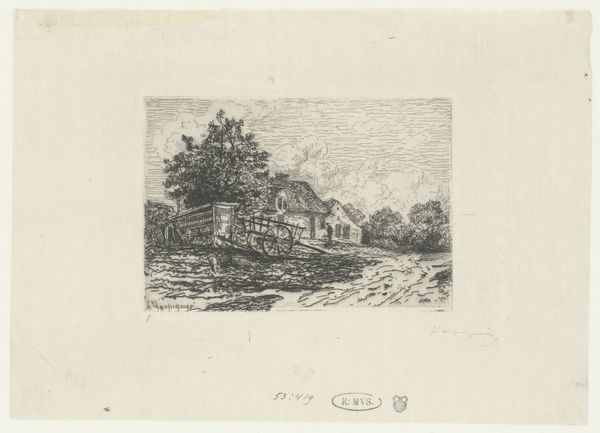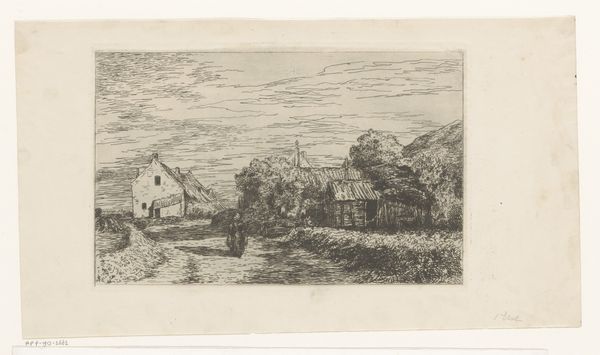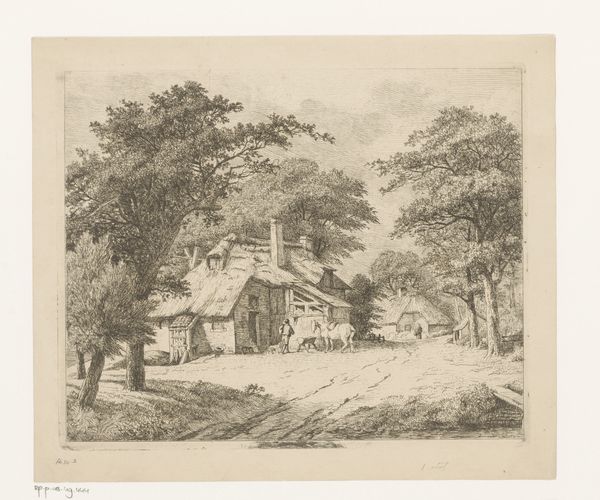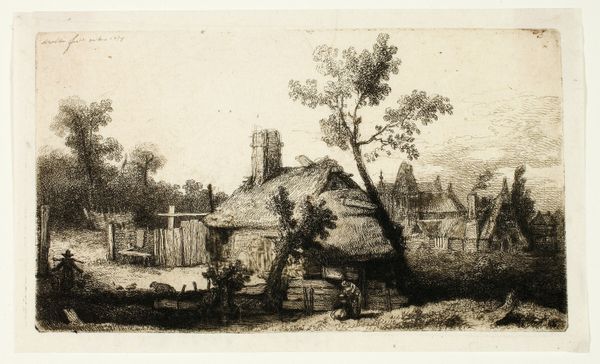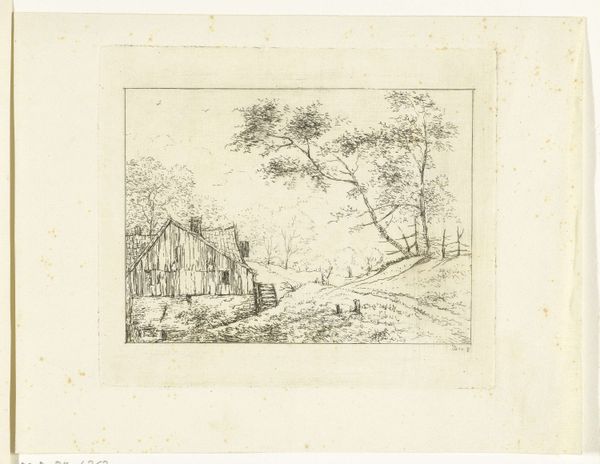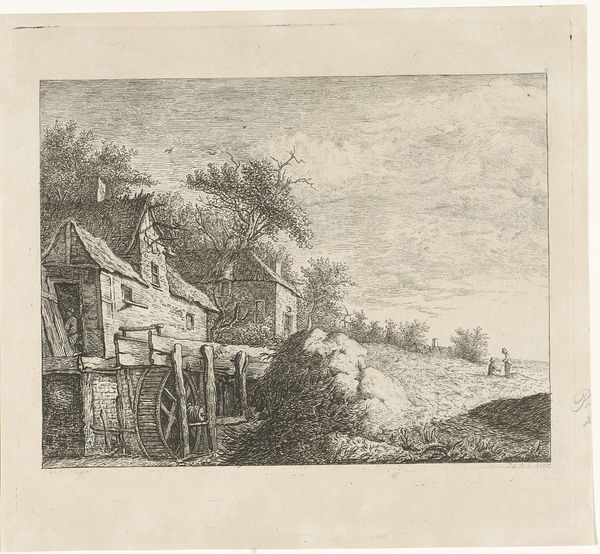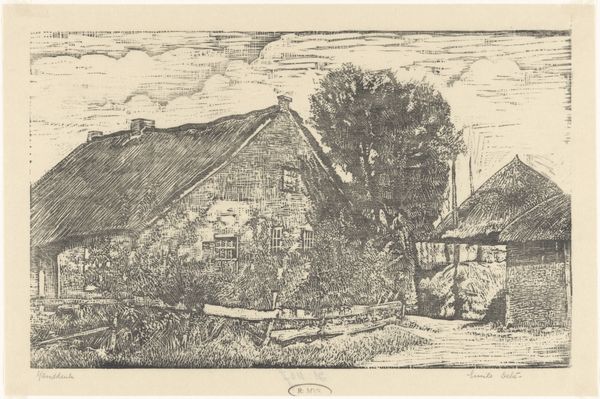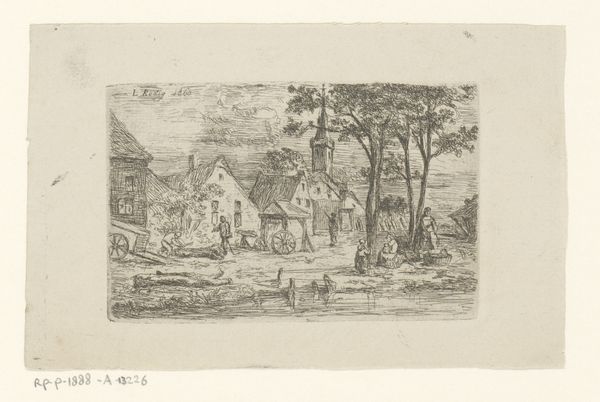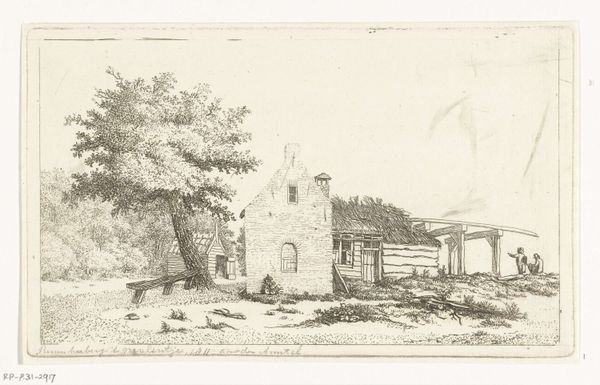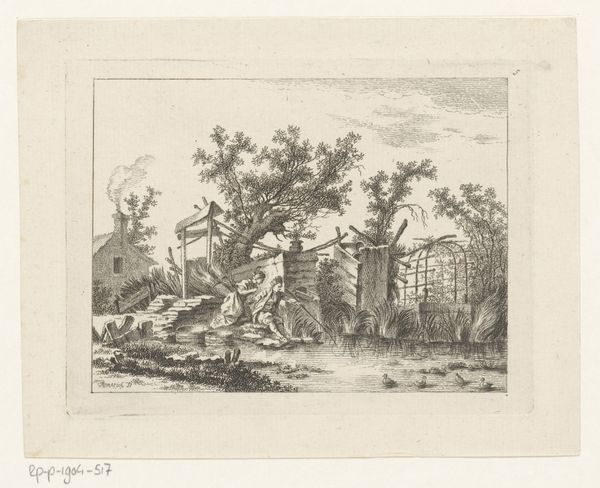
Dimensions: height 76 mm, width 91 mm
Copyright: Rijks Museum: Open Domain
Editor: This etching by Christoph Nathe, called "Landschap met boerenhutten," or "Landscape with farmhouses" was made sometime between 1763 and 1806. The composition is very evocative; it makes me feel as though I’m stumbling upon a secret, hidden place. What stands out to you in this work? Curator: Well, first observe the conscious arrangement. See how the clustered huts nestle under protective trees, almost as if sheltering figures. It’s a typical visual language that tells us stories beyond mere representation. Do you feel a certain sense of harmony, of enclosure? Editor: I do, there's a real feeling of peace, of safety. Is it intentional, to create these feelings? Curator: I think so. Nathe's decision to render this subject matter during a period marked by Enlightenment ideals signals a longing for simpler, more agrarian ways of life, doesn’t it? Farmhouses are, in a way, symbols of stability, endurance, even innocence when contrasted with growing urbanization. Editor: So, the artist may be contrasting two ways of life with the choice of this one little scene? Curator: Exactly! It's a visual emblem weighted with layers of societal reflection. This composition serves almost as a visual touchstone – calling up our collective memories tied to nature, security and perhaps a bygone era of self-sufficiency. Notice too how nature is not wild but tamed, ordered… the artist sees mankind’s mark as natural too. Does this detail suggest something new? Editor: Yes, that our relationship with nature is really one of working together. Thank you for showing me how the landscape genre encodes meaning. I’ll certainly never see it quite the same way again. Curator: My pleasure! Art’s greatest power is to trigger such epiphanies.
Comments
No comments
Be the first to comment and join the conversation on the ultimate creative platform.
